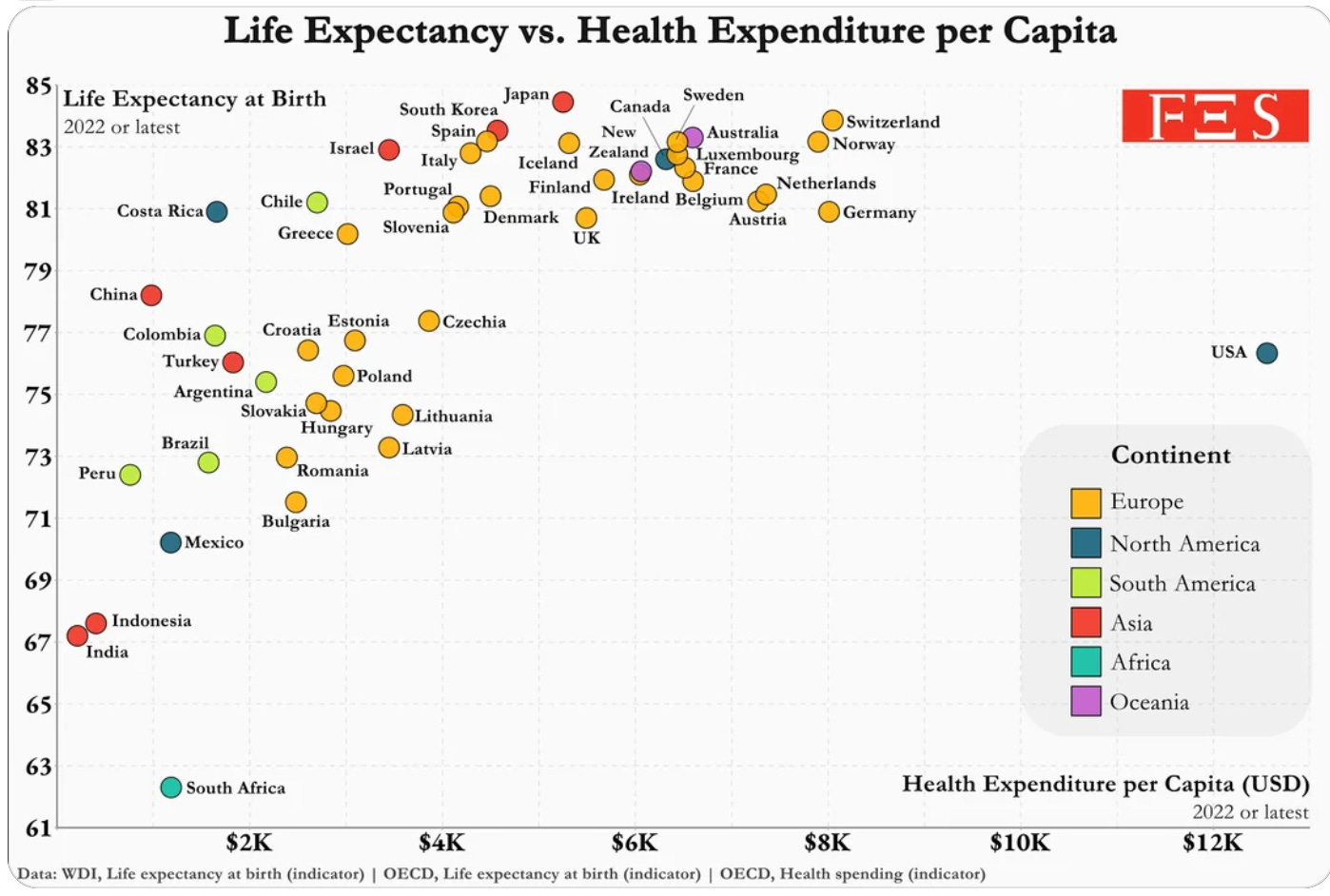Another Note on Disagreement
Saturday’s post from Dr. Holland Kaplan regarding clean drinking water stirred controversy. Many of the commenters disliked the post. I received some negative feedback.
I disagreed with the argument as well. My push back centers on the idea that removing fluoride from the drinking water is a surrogate for being against clean drinking water. It is not.
I know very little about environmental exposure science. The fluoride decision, however, does not require content knowledge.
I cite only one piece of data to establish equipoise in the public health decision to add fluoride to drinking water. And that is that most Western European countries have stopped or never started water fluoridation. This includes Germany, France, Italy, Spain, Netherlands, Belgium, Austria, Switzerland, Sweden, Norway, Denmark, and Finland.
Equipoise is defined by experts disagreeing. RFK’s push to remove fluoride from drinking water is therefore not an outlier. There is uncertainty.
I feel similarly about Dr. Kaplan’s citation of $2.4 billion reduction in funding for federal clean water initiatives. This, too, is a surrogate marker. Just because less money is being allocated does not mean bad outcomes will ensue. It might, but it might not.
US healthcare is a shining example of how money spent does not correlate with good outcomes.
Now I cite the About tab of Sensible Medicine:
The goal of Sensible Medicine is to showcase a range of ideas and opinions about all things bio-medicine. We feature contrasting ideas and opinions.
Adam and I feel that it is a positive that some strongly disagreed with Saturday’s column. This is the point of this site.
This winter, we wrote a post on disagreement. It’s worth another look.
Thanks for reading and supporting Sensible Medicine. JMM




Dear Dr. Mandrola,
I’m copying below the personal email I sent to Dr. Kaplan, under the subject: “‘Clean drinking water’ has become a euphemism for humanity’s transgression against nature and human biology.”
With all due respect, I believe the discussion around health—which is both necessary and urgent—should not be reduced to whether or not a physician sees patients. What’s truly at stake here is the health of individuals and populations alike.
Here is the email I sent Dr. Kaplan:
Dear Dr. Kaplan,
Witty satire indeed in Sensible Medicine Substack.
Let me say this plainly: “Clean drinking water” has become a euphemism for humanity’s transgression against nature and human biology. What was once a simple, vital element has been over-processed, over-intervened, and overengineered—often with the best intentions, yet with little regard for long-term consequences.
However, as a pediatrician who has worked with children in low-resource settings, I must gently remind you that H₂O is the second most essential nutrient for a human being—right after O₂. Still, when we begin dissolving or contaminating it with artificial solutes—things you’d never find in pristine high-altitude spring water—we take a leap of faith, not grounded in nature, but in Public Health good intentions. A leap, I might add, with unknowable consequences.
In truth, the consistent availability of water, a working aqueduct, sewage systems, and safe excreta disposal are far more impactful for the management of acute diarrhea, dehydration, episodes of nutritional collapse, and healthy child growth and development than simply adding chlorine to the water. (1,2)
As for fluoride: if we could only reduce the average child’s or adult’s daily intake of refined sugars and added carbohydrates from 75% to 25% of their current diet, we would see a far greater drop in cavities and tooth loss than what any artificially added fluoride could ever achieve. But of course, that won’t happen in this generation of Americans—ergo…
Let’s be honest: there is no truly safe potable water anymore, especially not in the United States. Anyone wishing to protect their health is now forced to adopt some form of at-home “decontamination” or “purification.” And the options range from rudimentary to absurdly high-tech.
We begin with sediment filters—basic, mechanical sieves that trap visible particles like rust or sand. Then come the activated carbon filters, which make water smell and taste better by removing chlorine and volatile organic compounds, yet leave behind microbes and heavy metals.
To fend off biological threats, we turn to ceramic filters or ultrafiltration, which can block bacteria and viruses without stripping the water of its minerals. Ultraviolet (UV) light offers a non-chemical route to sterilization by destroying microbial DNA, although it leaves chemicals untouched. Ion exchange systems soften water by swapping out calcium and magnesium.
At the pinnacle sits reverse osmosis—a technology so thorough it filters out virtually everything: viruses, bacteria, dissolved salts, heavy metals, even pharmaceutical residues—leaving behind a liquid so pure it rivals distilled water. The irony? To make it safe to drink, we then have to remineralize it, because nature never intended us to drink such a sterile fluid.
So no, I don’t think safe drinking water is overrated. I think it’s over-engineered, tampered with under a logic alien to natural systems. So much so that in some parts of the country, it might be chemically safer (if not biologically saner) to drink artificially colored, sweetened, carbonated soda with added vitamins than what flows from our taps.
Respectfully,
Someone who still believes that clean water shouldn’t need a lab technician or an engineer to be safe.
References
1. Gilman RH, Black RE, Epstein LD, Cabrera L, Sterling CR, Moulton LH. Effect of water and sanitation on childhood health in a poor Peruvian peri-urban community. Lancet. 2004 Jan 10;363(9403):112–8. doi:10.1016/S0140-6736(03)15261-0. PMID: 14726164.
2. Sánchez R, Echeverry J, Pardo. The brachial and cephalic perimeters as indicators of poverty and acute diarrhea in children under five years in Bogotá. Rev Salud Publica (Bogota). 2004 May-Aug;6(2):167–82. Spanish. doi:10.1590/s0124-00642004000200004. PMID: 15382455.
Disagreement is why I enjoy this community. I want to hear more sides and perspectives. The comments are full of rich personal histories and more data points that fill in gaps in my awareness and give places to look further. I appreciate the way you disagree with each other - modeling professional respect and integrity. Thank you.